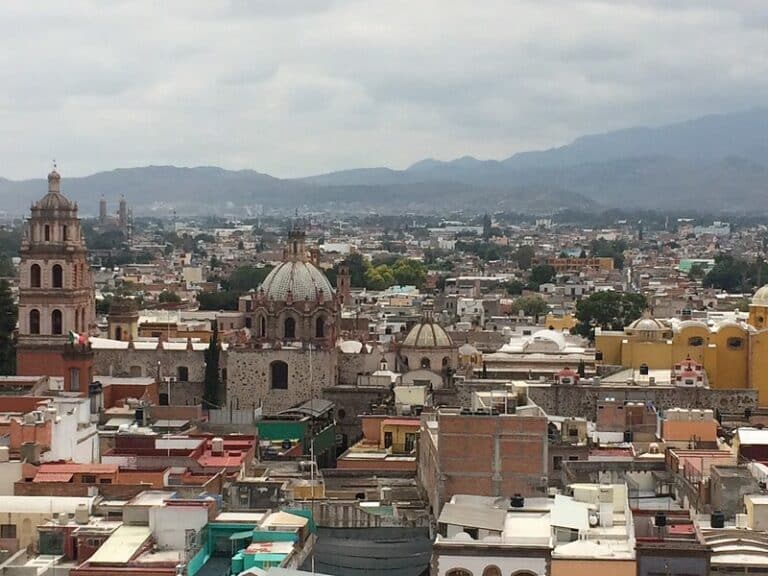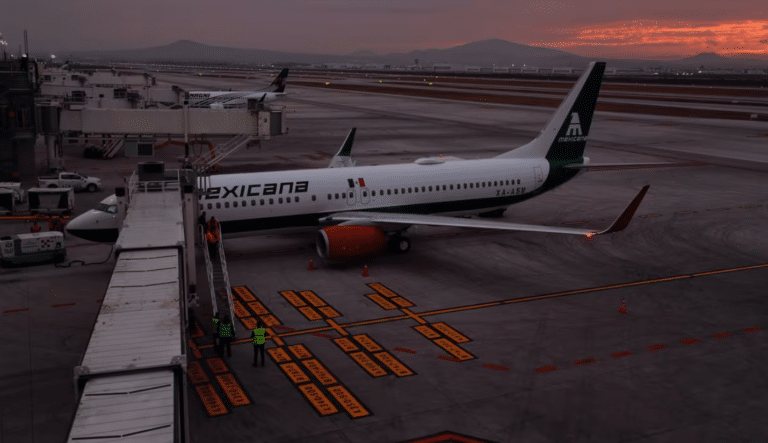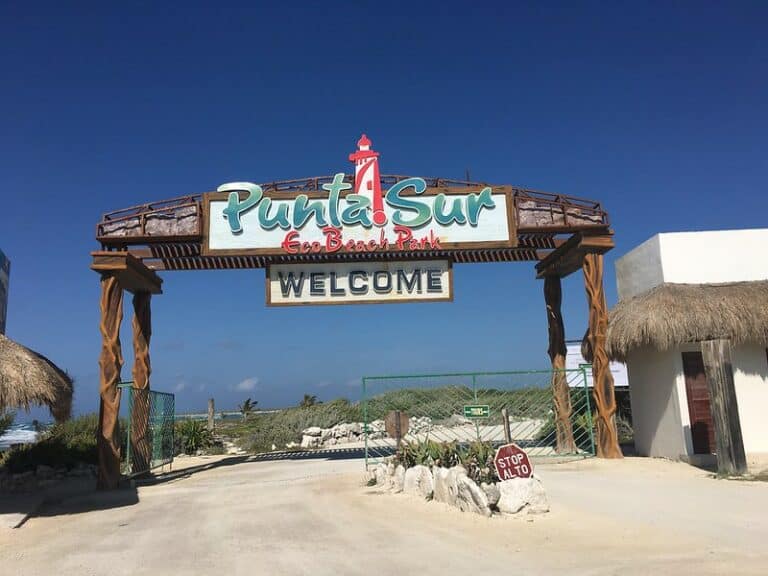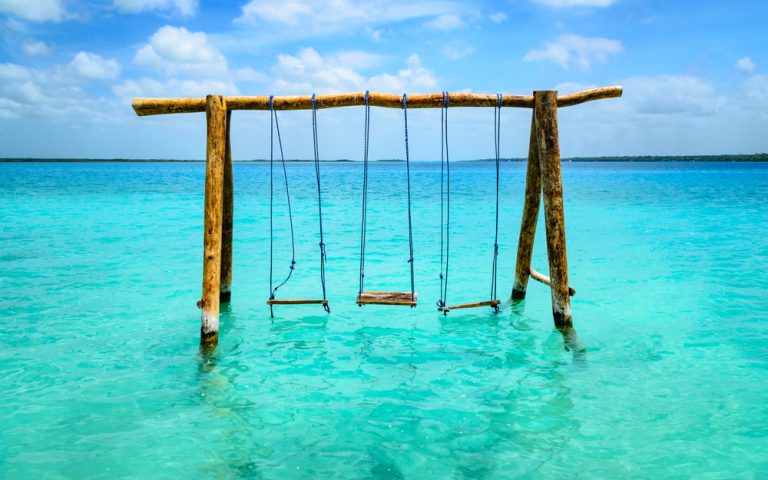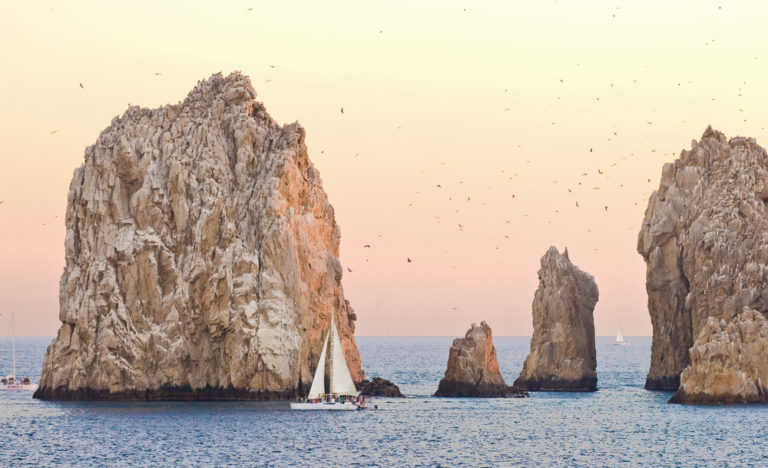Zacatecas Mexico: A Journey Through Culture and Beauty
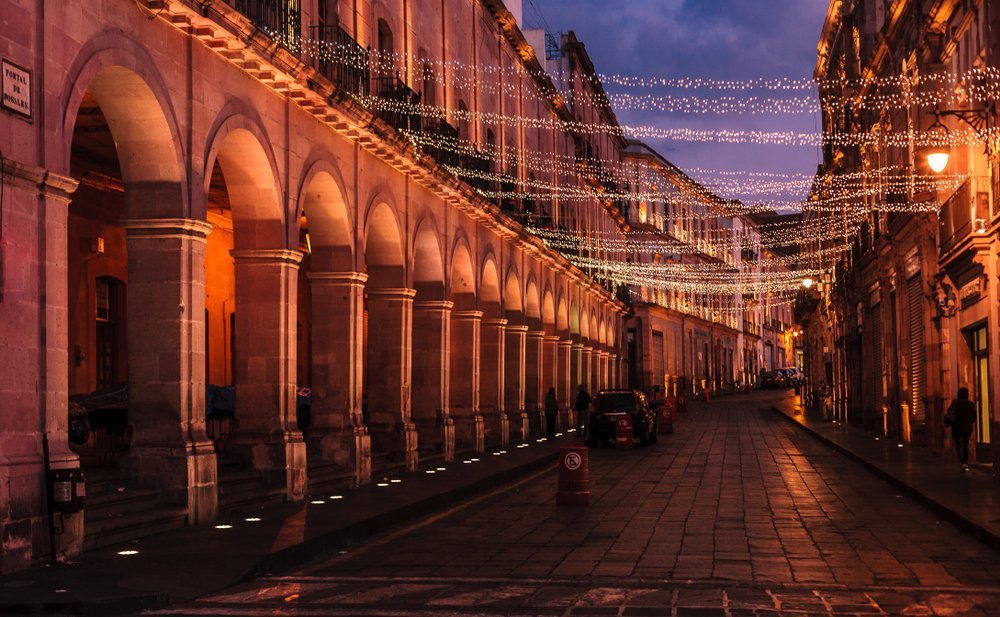
Zacatecas Mexico Escapade: A Journey Through Culture and Beauty
Zacatecas Mexico is known as “the pink city with a silver heart” due to the color of the stone used in the construction of its main monuments and the richness of its precious metal deposits.
The state capital, the magical towns, and other localities of the region possess architectural and natural beauties and sites of great historical importance, both in mining and Mexico’s conformation as a Republic.
If you’re serious about exploring and discovering Mexico, Zacatecas city and its surroundings are not to be left behind. Here are 20 reasons why:
Where is Zacatecas City?
Zacatecas City is located in the central region of Mexico. It is approximately 630 km northwest of Mexico City.
There are several ways to get to Zacatecas, depending on your starting point. Some options include:
By plane: The airport is located about 20 minutes from the city center. It receives flights from several major cities in Mexico, including Mexico City, Guadalajara, and Monterrey.
By bus: Zacatecas City is well-connected by bus to several cities in Mexico, including Mexico City, Guadalajara, and Aguascalientes.
Several bus companies operate in the area, such as ETN, Primera Plus, and Omnibus de Mexico.
Bus travel is generally affordable and comfortable, and the bus station in Zacatecas City is located near the city center.
By car: If you prefer to drive, Zacatecas City is located along the Mexican Federal Highway 45, which connects several cities in central and northern Mexico.
The drive from Mexico City takes approximately 6-7 hours, depending on traffic and road conditions.
Top 20 things to See in Zacatecas City and State
1. Visit El Eden Mine

Let’s start with a 16th-century site with museums and many minerals: El Edén mine.
This silver and gold mine began to be exploited in the 1580s and had its greatest splendor in the XVII and XVIII centuries.
It was closed in 1960 due to flooding and reopened 15 years later as a tourist attraction.
Between 2004 and 2005, artistic and museographic remodeling work was undertaken, turning it into an attraction of first-level interest in its field.
Its tour leads through galleries and tunnels and includes a train ride in the La Esperanza tunnel, accompanied by guides.
Inside the mine is a museum of minerals and rocks from all over the world, including gold and silver veins in their natural state. It is a place with a didactic and recreational approach in its exposition.
The El Edén Zacatecas mine is located on Antonio Dovalí Jaime Street. It is open every day from 10 – 6 pm. The entrance fee is 100 pesos (about five dollars).
2. Cathedral Basilica of Zacatecas
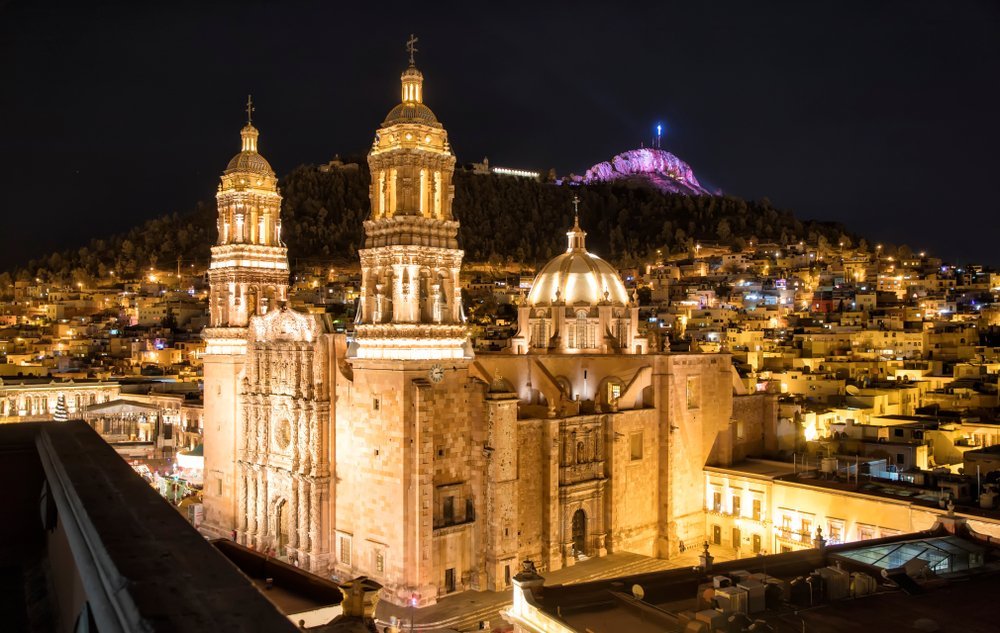
This religious building declared a World Heritage Site, is located in the historic center of Zacatecas and is dedicated to the Virgin of the Assumption.
Its construction ended in 1772, leaving a majestic temple with two superb towers, which made the silver aristocracy and the whole city proud when it was built in the 18th century.
The cathedral combines the Novo-Hispanic baroque, churrigueresque, and neoclassical styles.
In its elegant facade stand out the Corinthian colonnades and the sculptures carved in stone of figures of the New Testament, doctors of the church, and popes.
The woodwork is made of birch wood and weighs 20 tons.
The lateral portals are also of great beauty. The north is dedicated to the Lord of the Parish and the south to Our Lady of Zacatecas.
Inside, the main altarpiece stands out, a 2010 work of Javier Marín that replaced previous ones. It is 10 meters wide by 17 meters high and is covered with sheets of gold extracted from the state mines.
3. Visit Guadalupe Zacatecas
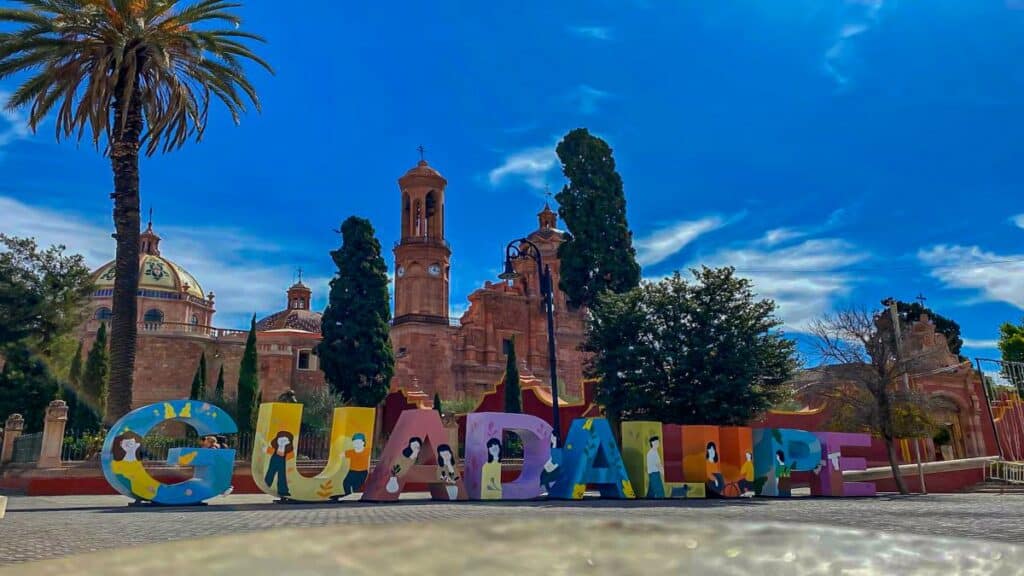
The town of Guadalupe, part of the metropolitan area of Zacatecas, was declared a Magical Town in 2018, becoming the sixth town in the state with this distinction for its monuments, museums, and craft traditions.
The Guadalupe Museum stands out among the museum precincts, one of the most important tourist sites in Zacatecas and Mexico, for its New Spanish artistic heritage.
The museum is located in the old Convent of Our Lady of Guadalupe and houses more than 800 objects of viceregal art, including canvases of the great masters of Novo-Hispanic painting, sculptures, and feather-made pieces.
The conventual temple has a beautiful baroque façade flanked by a minaret tower and a bell tower.
The eighteenth-century organ and the choir stalls inside are majestic.
In the big house of the old mining hacienda of Bernárdez functions the Centro Platero y Artesanal de Zacatecas, where silver jewelry is produced.
The Juarez Garden is the central local meeting place surrounded by emblematic buildings such as the convent, the museum, and the Chapel of Naples.
4. Teul de Gonzalez Ortega, Zacatecas
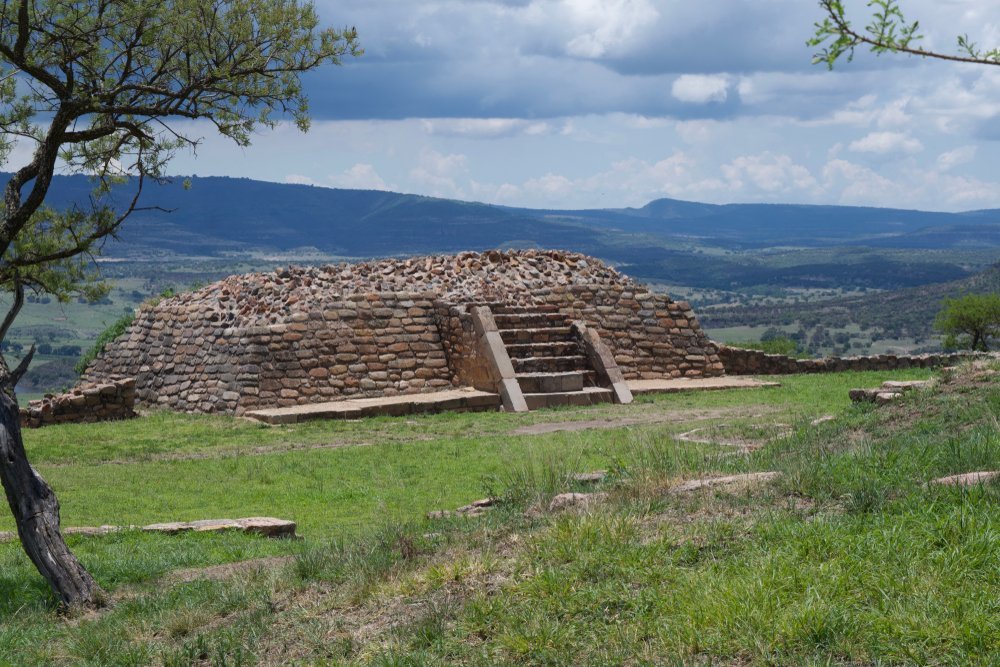
Teul is south of Zacatecas, in the Sierra Madre Occidental.
It became a Magical Town due to its architectural and archeological heritage.
The church of Nuestra Señora de Guadalupe was built in 1535, one of Mexico’s oldest religious buildings.
Adjacent to the church of San Juan Bautista is the museum and parish theater, with a collection of pre-Hispanic and colonial artifacts.
The archaeological site is located in the Cerro de Teúl, with a pyramid on top, destroyed by the Spaniards and their Tlaxcalan allies, and later it was rebuilt.
Another attraction in Teul is the Don Aurelio Lamas Mezcal Factory, almost a century old. It now offers a tour of its facilities.
Between the end of July and the beginning of August, the town of Teul de Gonzalez Ortega celebrates the “day of the absent son,” a festive reunion of the town natives who live in other places of Mexico and abroad.
The regional fairs are held from November 16 to 22 with dances, typical shows, and traditional foods.
5. Admire the Cerro de la Bufa
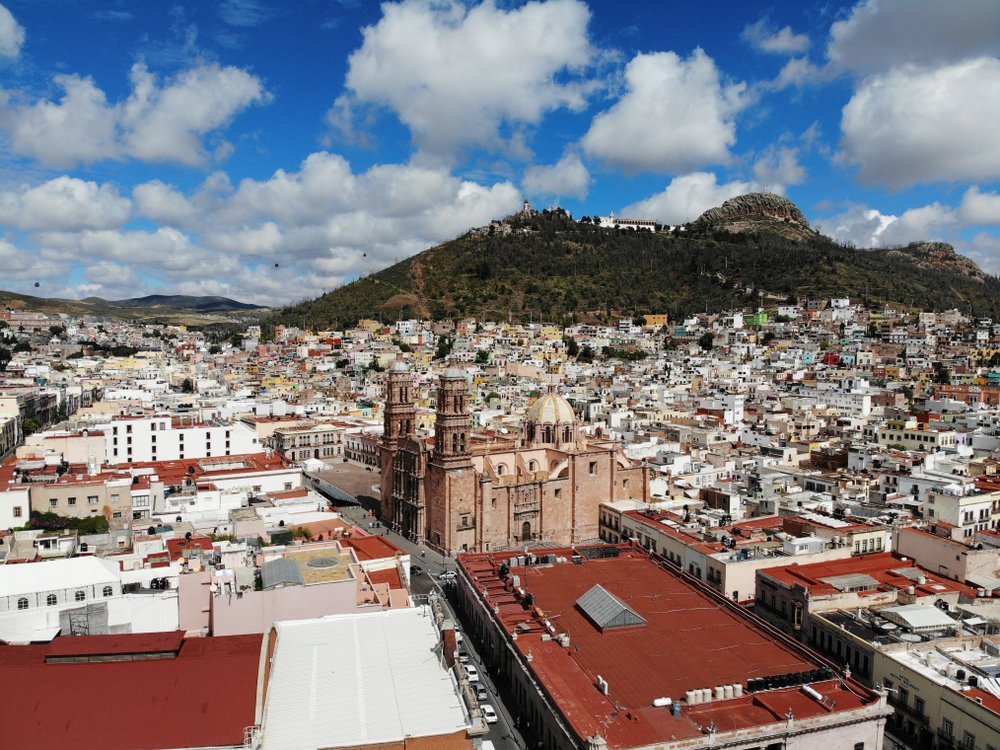
According to the most popular legend, the name of this hill, a popular geographic reference of the city of Zacatecas, was given by the conqueror, Juan de Tolosa, in the XVI century, who found it similar to a pig’s bladder, which is called bufa in some parts of Spain.
It is a historical hill since Hidalgo arrived there at the beginning of the Independence, and it was the scene of the taking of Zacatecas by Pancho Villa in 1914.
On the hill lies the Sanctuary of the Virgen del Patrocinio, which dates back to 1728 and is one of the main places of worship in the city.
The Zacatecas cable car, a means of transportation and tourist attraction, has a station on Cerro de la Bufa.
In one of the skirts of the elevation is the Mausoleum of Illustrious Men, where the remains of outstanding personalities rest like the musician Genaro Codina Fernandez, author of the March of Zacatecas, the anthem of the charros, and second national anthem of the zacatecanos.
6. Pinos Zacatecas
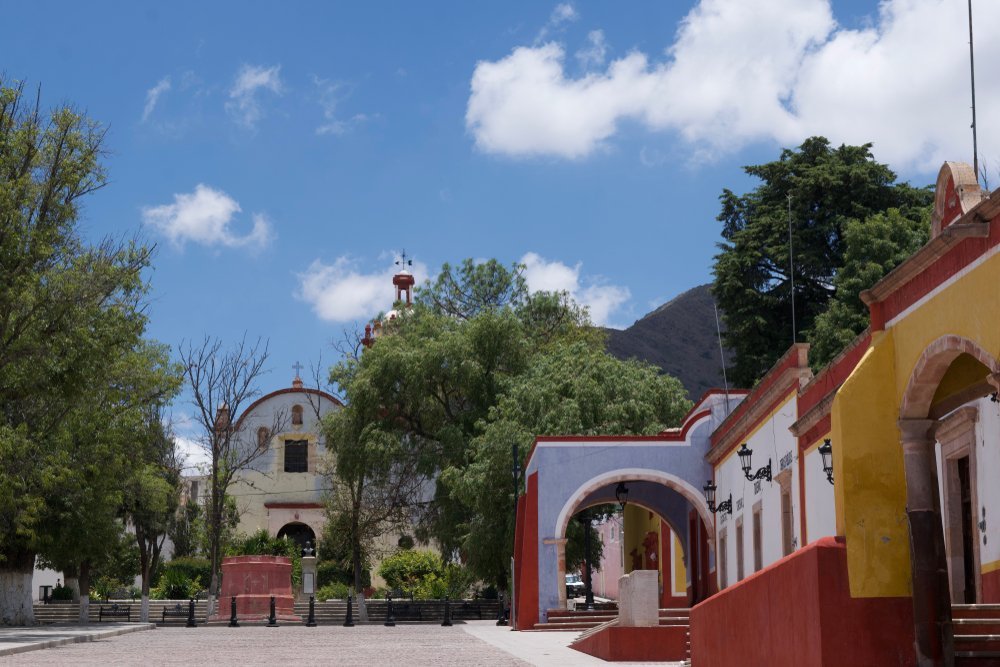
The Magical Town of Pinos Zacatecas is 2500 meters above sea level in the Gran Tunal desert, which gives it a cool, dry climate.
It was part of the Camino Real de Tierra Adentro thanks to its mines, and the boom of precious metals allowed the construction of a heritage preserved as a tourist attraction.
In front of the Plaza de Armas are the former convent of San Francisco and the parish church of San Matías.
On the grounds of the old Tlaxcalan neighborhood is the Tlaxcalilla Chapel, which houses paintings and a remarkable Churrigueresque altarpiece.
The IV, Centennial Community Museum, exhibits a collection of prehistoric objects, historical pieces, and works of art, while in the Museum of Sacred Art is the famous Floating Heart Christ.
At Hacienda La Pendencia, they have been making mezcal for four centuries without changing the procedure and preserving the stone ovens for cooking and the agave-crushing tahonas.
Be sure to buy the popular jarritos, symbols of its pottery, and craftsmanship.
7. Zacatecas Cable Car

It links the Cerro de la Bufa and Cerro del Grillo throughout the historic center of Zacatecas, making a journey of 650 meters at 85 meters high.
The cable car was inaugurated in 1979 as the first in Mexico and is one of its great tourist attractions, especially for its beautiful panoramic views.
It was resumed in 2018 after being stopped for two years to modernize the system and expand the cabins.
It now operates with seven compartments with a capacity of 8 passengers per unit, and one of them has a glazed floor for increased visibility.
It travels at 19 KPH and is equipped with automated safety devices, which the previous ropeway lacked.
The Eden Mine, below Cerro del Grillo and one of the city’s main attractions, is connected to one of its stations.
The transportation system operates from Monday to Sunday between 10 am and 6 pm, extending the schedule until 10 pm in the high season.
A one-way trip costs 100 pesos for adults and 50 pesos for children (160 and 80 for round trips). Zacatecan citizens enjoy a 50% discount.
8. Jerez Zacatecas
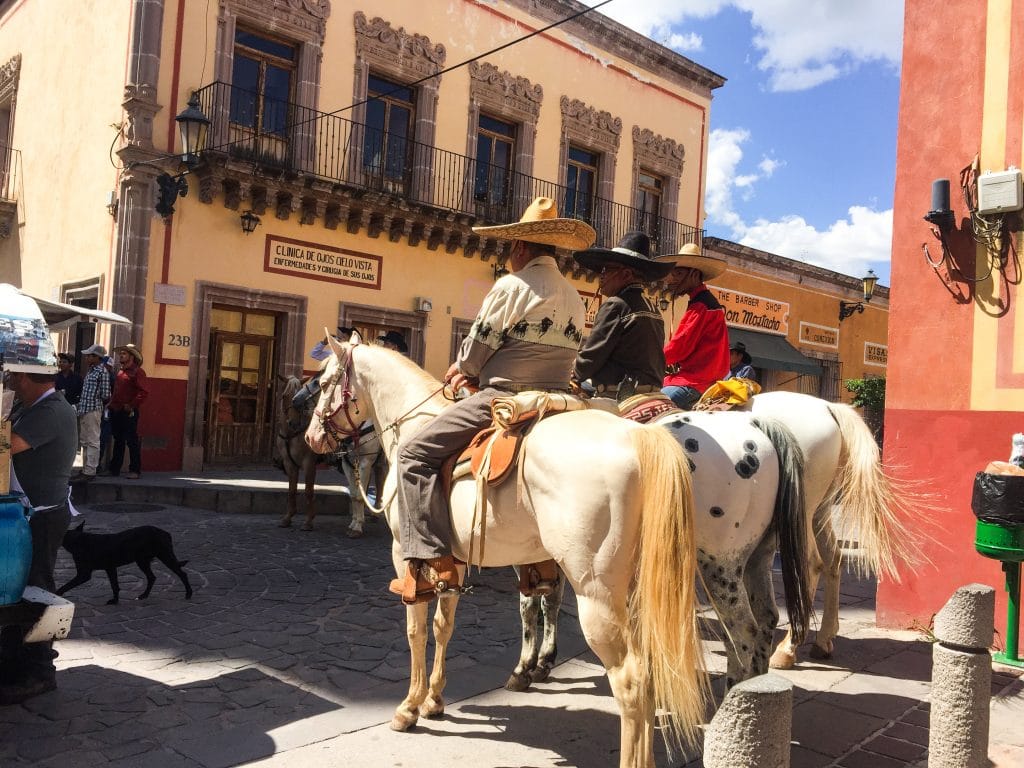
The Tambora is the musical instrument that represents this Magical Town 54 km southwest of Zacatecas.
The Zacatecan tamborazo is a legacy of the 19th century. On November 22, the day of Santa Cecilia and the musicians, the Festival de la Tambora (Drum Festival) is celebrated and attracts many visitors.
Jerez de García Salinas also stands out among the tourist places of Zacatecas for its beautiful architectural heritage, headed by the Municipal Palace, an impressive baroque building of the 18th century; the Sanctuary of Nuestra Señora de la Soledad, the Tower Building, the Hinojosa Theater, and the Humboldt and Inguanzo portals.
For the practice of outdoor sports, there is the Centro Ecoturístico El Manantial, in the Sierra de Cardos, where there are hiking, biking, horseback riding trails, hanging bridges, and cabins.
In the Handicrafts Market, you can buy beautiful gold and silver filigree work and articles of leather and natural fibers.
9. Museum of the Taking of Zacatecas
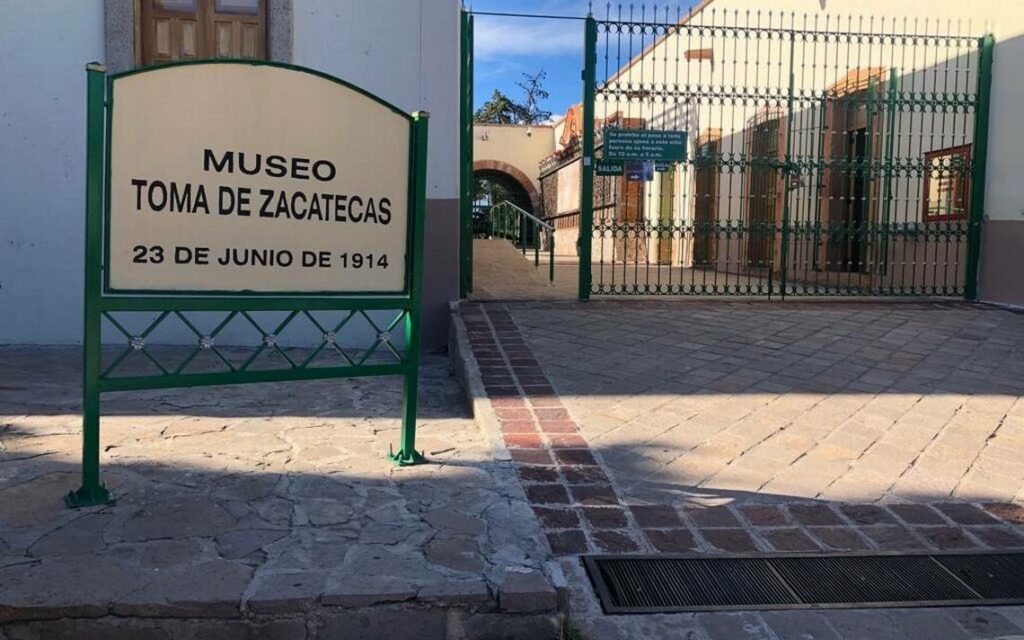
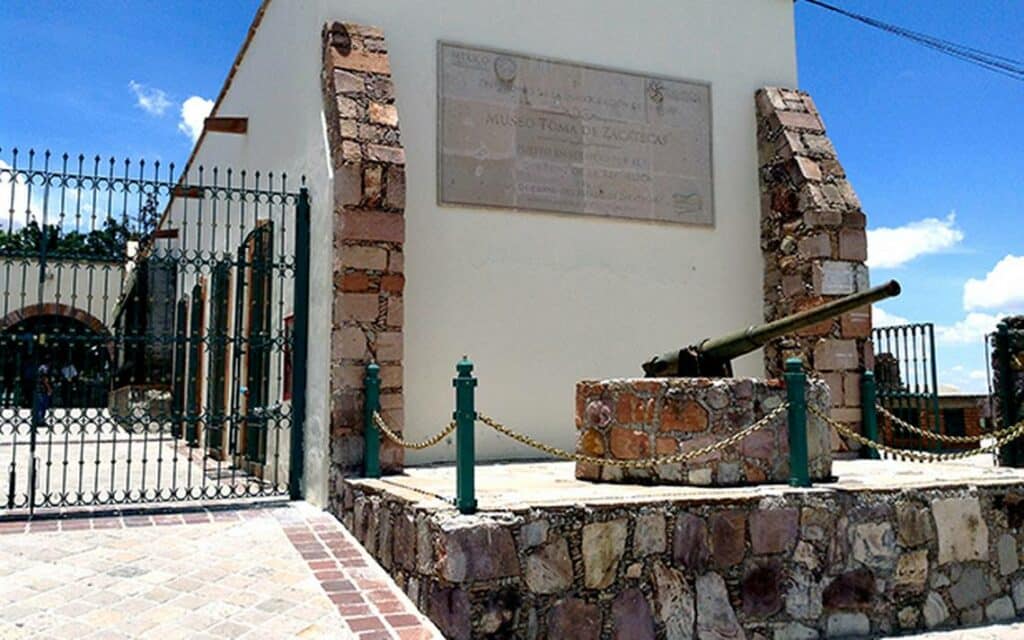
The capture of Zacatecas was an important event of the Mexican Revolution.
After the victory of Pancho Villa and his fearsome Northern Division over the forces of President Huerta, on June 23, 1914, the path of the revolutionaries to Mexico City was paved.
The museum is located in the Casa Fuerte del Patrocinio, on the esplanade of Cerro de la Bufa, a site used by Victoriano Huerta’s federal army as a warehouse and hospital; from where it was expelled by the “villistas.”
This site was built and occupied in the 16th century by Spanish conquistadors before the formal founding of Zacatecas.
The museum opened in 1984 during the commemorations of the 70th anniversary of the seizure and was expanded in 2014.
It contains a layout of the positions of the opposing forces, weapons used, newspapers of the time, photos, coins, banknotes, documents, and mining-related objects.
Outside the museum is the Esplanade of the Revolution, with sculptures of Villa and other revolutionaries.
10. Sombrerete, Zacatecas
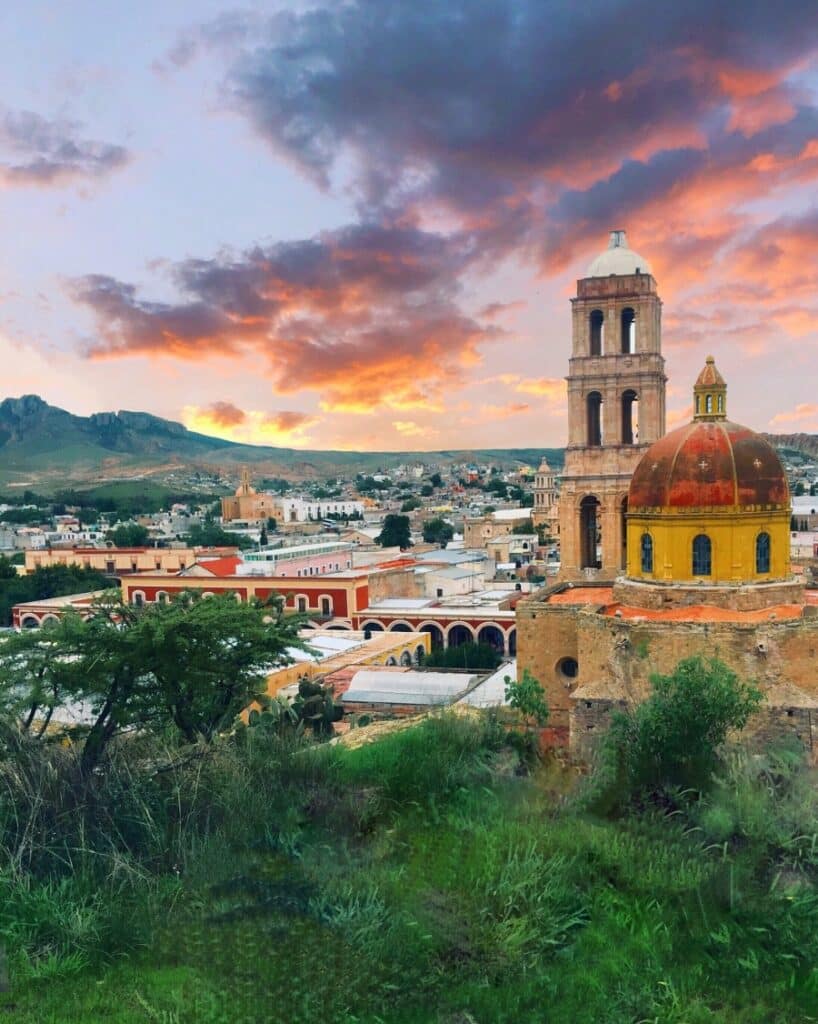
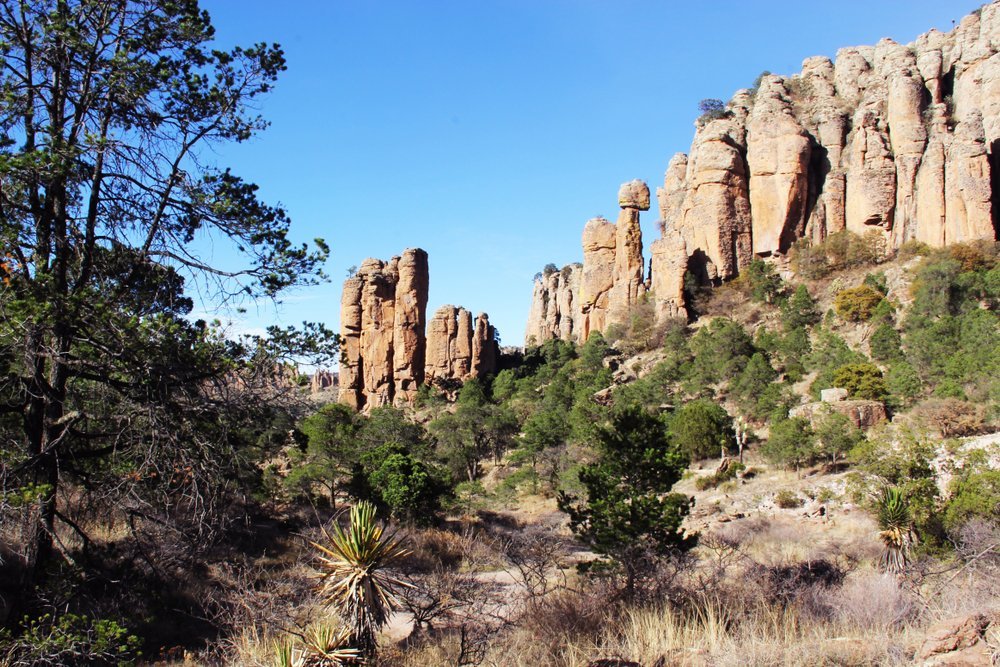
Its fascinating architecture, the beauty of the Sierra de Órganos, and the archaeological site of Altavista are the main attractions of the Magical Town of Sombrerete, in the state of Zacatecas.
The Temple of the Third Order has a beautiful facade of Renaissance lines and an unusual vault resting on two arches.
The San Francisco de Asis convent is a pilgrimage center where the founder of the Franciscan order, the Virgen del Refugio, and San Mateo are venerated.
The Altavista site is about 55 km from Sombrerete with archeological ruins and a museum that exhibits a collection of objects from the Chalchihuite culture.
This mountain range of rocky slopes is named after its elongated stones that resemble the flutes of an organ.
The Sierra de Órganos has curious rock formations for good photos, such as La Ballena and the Cara de Apache.
The gastronomic specialty here is the “brujitas,” gorditas stuffed with minced meat, potatoes, and beans.
11. House of the Inquisitor Museum
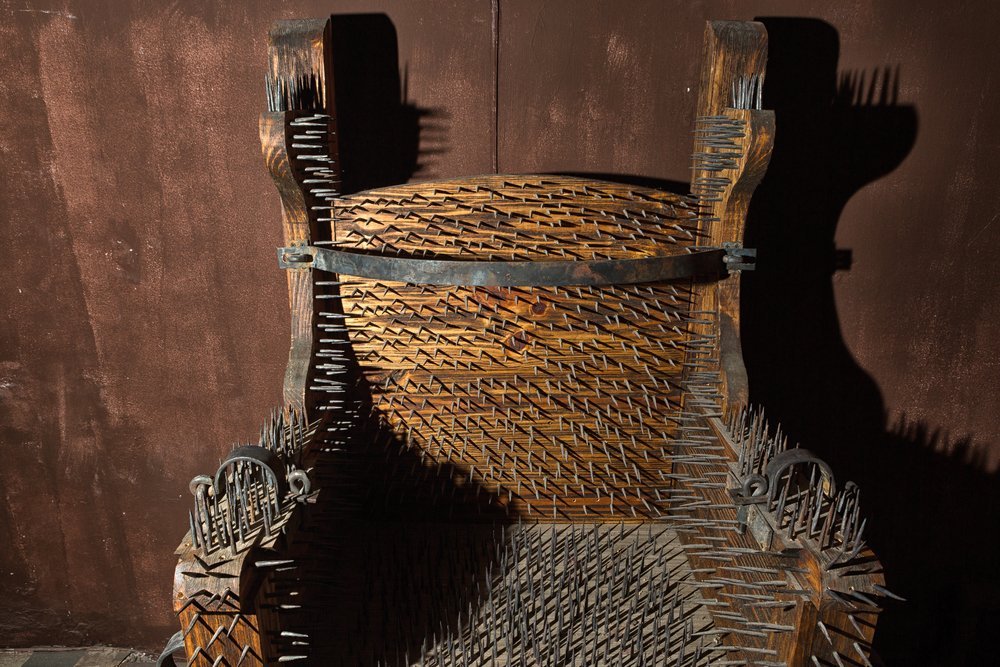

A visit to this museum is a journey back to when men and women were imprisoned and burned by the Holy Office for alleged heresy.
It is located on Hidalgo Avenue, in the historic center of Zacatecas, in front of the Portal de Rosales. It is open from 9 am to 9 pm, closing at 10 pm during the holiday season.
The Museo Casa del Inquisidor exhibits originals and replicas of devices and tools used to torture prisoners during the trials of the Inquisition.
The guides offer an overview of this gloomy period in Mexico that spanned between 1571 and 1820, although, in Europe, it had begun in 1184 amid medieval obscurantism.
Among the museum’s spaces are the trial rooms, capital and minor punishments, and masks.
There is also a room with replicas of the mummies discovered in the Zacatecas temple of Santo Domingo in 2009.
12. Visit Fresnillo Zacatecas
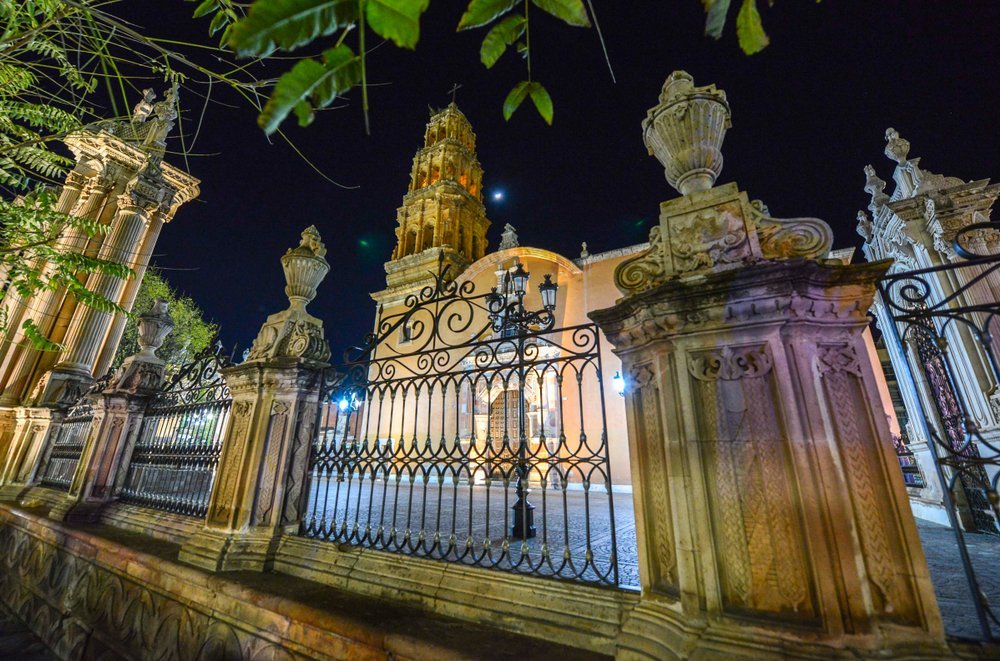
Fresnillo is the second most populated city after the capital, 41 km northwest of Zacatecas.
Also dubbed “El Mineral” and the “Silver Capital of the World.” The Napoleon Gomez Sada Mining Museum and the Ecological Park and Tourist Mine Are among Fresnillo’s attractions.
The museum has a collection of minerals, photographs of the most important mineralized bodies in Mexico, mining instruments, and a room dedicated to the Hacienda Nueva, the world’s largest silver mill.
The park has a collection of fauna and flora and access to a subway mine, ending the tour with the ascent to a viewpoint with spectacular views of the landscape and the city.
A few kilometers from Fresnillo is Plateros (see below), with its famous sanctuary of the Santo Niño de Atocha.
13. Plateros
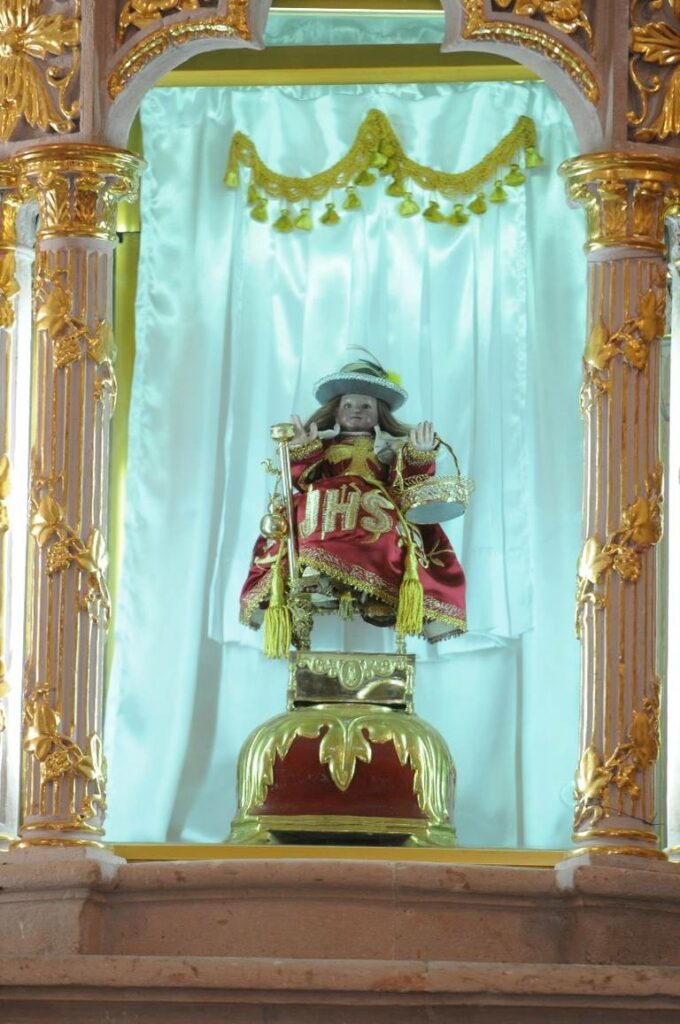
The town of Plateros, separated from the city of Fresnillo by the Mexico-Ciudad Juárez Highway, is one of the most important pilgrimage centers in the country because of the sanctuary that houses the Santo Niño de Atocha, a small image that awakens one of the greatest national venerations.
This sanctuary summons crowds only surpassed in Mexico by the Basilica of the Virgin of Guadalupe and the Cathedral of Our Lady of San Juan de Los Lagos.
The maximum fervor materializes on the occasion of the Santo Niño de Atocha feast on Christmas Day when tens of thousands of faithful come to ask for divine favors or to thank them.
The sanctuary was finished at the end of the 18th century as a late baroque architectural sample, where a valuable collection of neoclassical altarpieces is exhibited.
The Sanctuary of Plateros is a World Heritage Site located on the old Camino Real de Tierra Adentro, the almost 2,600 km long road that linked Mexico City with Santa Fe (New Mexico, USA).
14. La Encantada Park and Zoo
Animals, groves, large green areas, playgrounds, open-air theater, tartan track, murals, and a miniature train are the low-cost attractions offered by La Encantada Park and Zoo, open Wednesday through Sunday from 11:30 am to 6:30 pm.
The entrance fee includes a ride on the miniature train.
The park was inaugurated in 1985 on a 5-hectare site. The zoo houses more than 180 specimens of 40 species, including tigers, lions, pumas, sheep, zebras, bears, lemurs, spider monkeys, titis, prairie dogs, raccoons, donkeys, sheep, and birds of prey.
There are peacocks (common and white), Canadian ducks, geese, guinea fowl, and other species in the aviary.
The extensive green areas are perfect for family gatherings, practicing yoga, and exercising in the outdoor gym. The tartan track is ideal for jogging and running.
15. Nochistlán Zacatecas
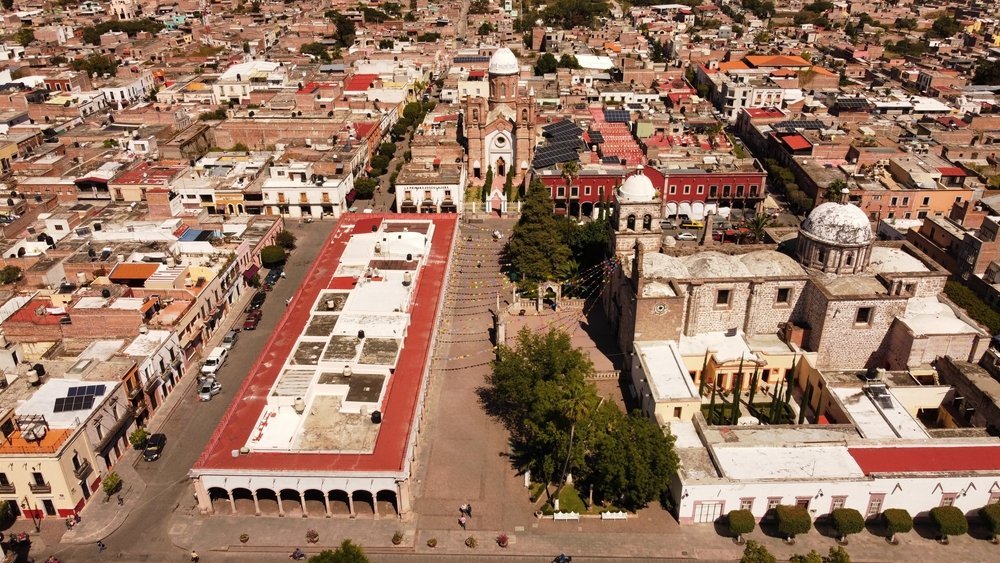
Nochistlan is a southern Zacatecan town, near the border with Jalisco, with architectural jewels and traditions that earned it the designation of Pueblo Magico.
The main square is the Morelos Garden, a landscaped and wooded space surrounded by colonial and republican buildings.
The parish church of San Francisco de Asís was built in the 17th century and contained the tomb of San Román Adame Rosales; a priest shot during the Cristero War.
The temple of San José is a neo-Gothic construction with a white dome and two slender twin towers.
The temple of San Sebastián houses the so-called Guerito de Nochistlán, an image of the martyr that enjoys great veneration in the town.
The Casa de Los Ruiz was the scene in 1810 of the Cry of Independence in Zacatecas. The Aqueduct of Los Arcos is an impressive construction of the 18th century, with majestic arcades and basins supplying water until the last century.
The arches are illuminated at night, offering a beautiful postcard view of Nochistlense.
16. Rafael Coronel Museum Zacatecas
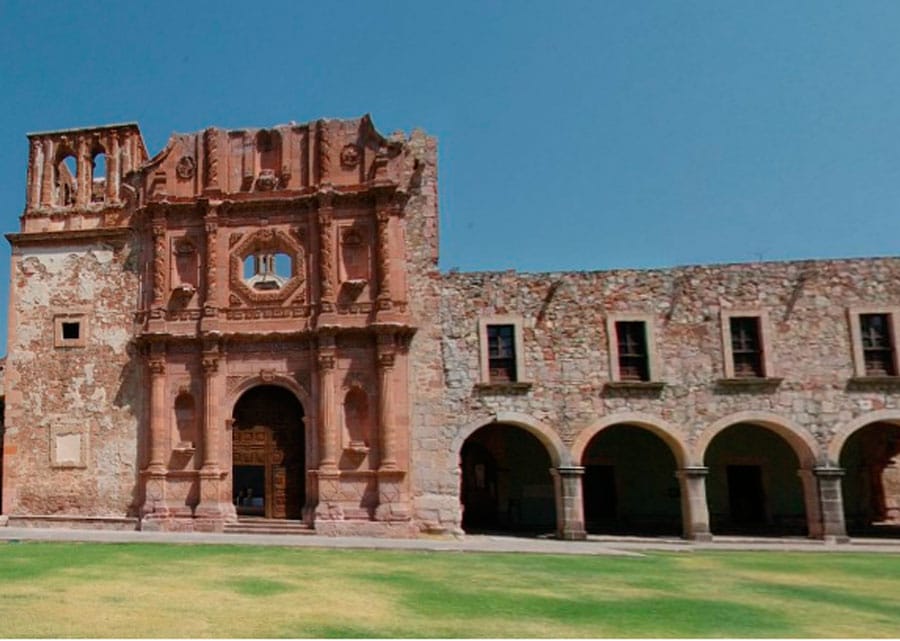
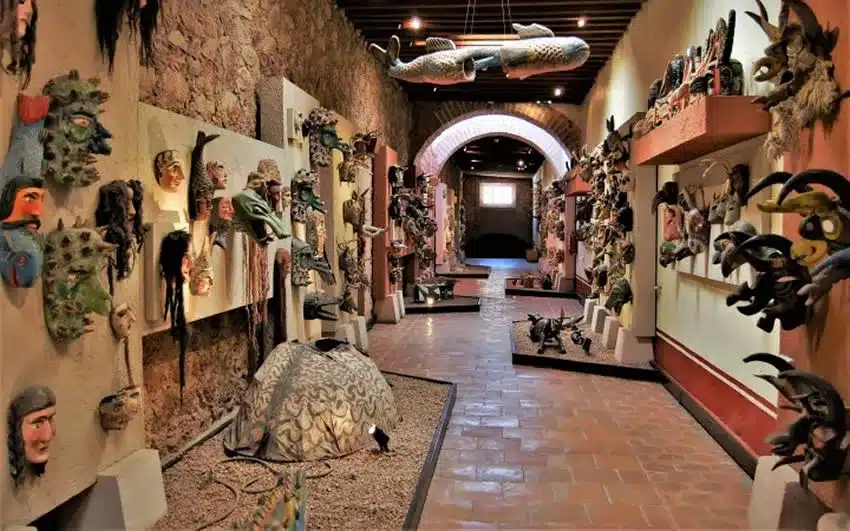
Rafael Coronel Arroyo was a Zacatecan creator who excelled in figurative and abstract art. He passed away in 2019.
The museum that takes his name housed in the ex-convent of San Francisco, in Zacatecas, the building of 1593 that was the first conventual enclosure founded in the state’s current territory.
The museum spaces were restored and refurbished between 1987 and 1990.
The museum’s patrimony comprises over 16000 pieces, including masks, pre-Hispanic objects, drawings, paintings, terracotta, puppets, crafts, offerings, colonial furniture, and musical instruments.
It exhibits the most important collection of masks in the world and some works by Diego Rivera, such as the study of a self-portrait of the famous painter from Guanajuato for his mural, Dream of a Sunday Afternoon in Central Alameda.
In the collection, there are pre-Hispanic figures that belonged to Rafael Coronel and masks made and donated by the artist, inspired by different themes such as the devil, Easter, Lent, Holy Week, and typical dances and animals.
Las Tandas de Rosete Aranda Hall houses an exhibition of puppets from the 19th and early 20th centuries, which belonged to the famous family and puppet company.
17. La Quemada
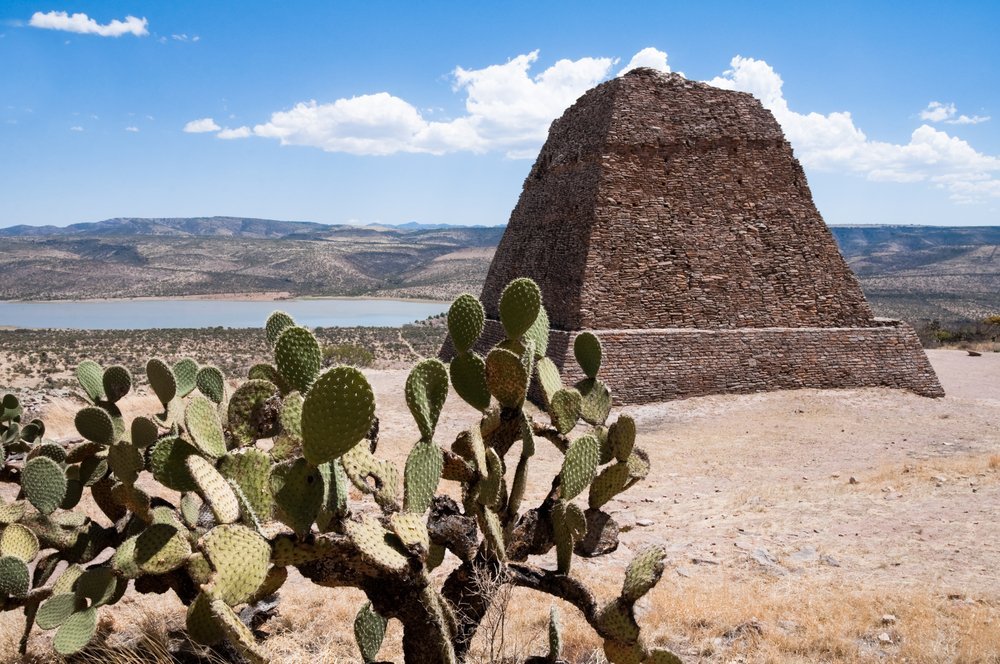
La Quemada (burnt) is an archeological site in the Zacatecas municipality of Villanueva, 50 km south of Zacatecas city.
There are two versions of the origin of the name. One suggests that it was given by the first conquerors who found the place burned.
Another theory suggests took its name from an hacienda that burned down.
Some colonial chroniclers associated the site with Chicomóztoc or the Place of the Seven Caves, a mythical area of origin of the Mexica and other Mesoamerican civilizations.
Among its structures, the Votive Pyramid and the Hall of Columns stand out. The first is a building of 10 meters high and inclined slopes with a temple at the top.
The Hall of Columns measures 41×32 meters and has 11 columns that are believed to support a roof. It is suspected that its purpose was ceremonial, including human sacrifices.
Other complex structures are a ball game court, ruins of the wall that surrounded the citadel, the Pyramid of the Sacrifices, and the Barracks, which are the last structures of possible residential use.
18. Tlaltenango Zacatecas
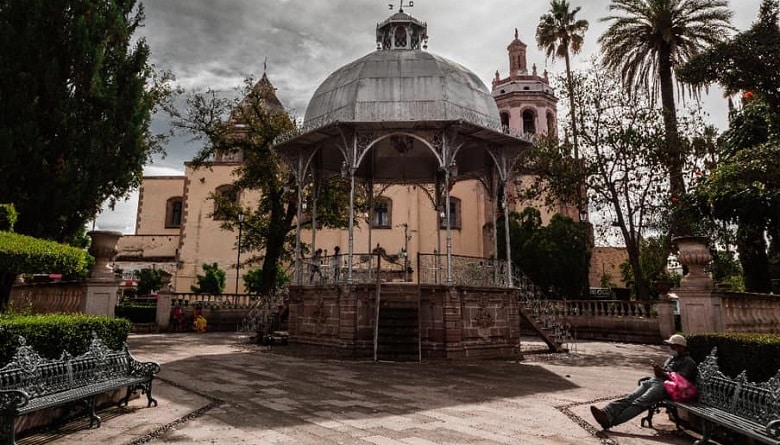
This town and municipality of the same name are located in the Tlaltenango Valley, 170 km south of Zacatecas.
Among its places of interest is the Tlaltenapa Museum, opened in 2005 by private initiative, with a collection of objects donated mainly by the villagers.
It has rooms with different themes, including clocks, decorative pieces, and furniture; coins and bills, instruments from the town’s old pharmacy, industrial objects that belonged to an old soda factory, and archeological pieces.
The word “tlaltenango” is Nahua and would mean “land on plateaus.”
Other local attractions are the church of the Virgin of Guadalupe, the temple of San Diego, and the chapels of Veracruz and Santo Domingo.
The main natural area is the Sierra de Morones, with a ravine called El Campanario, streams, waterfalls, and hiking trails.
19. Admire the Zacatecas Aqueduct
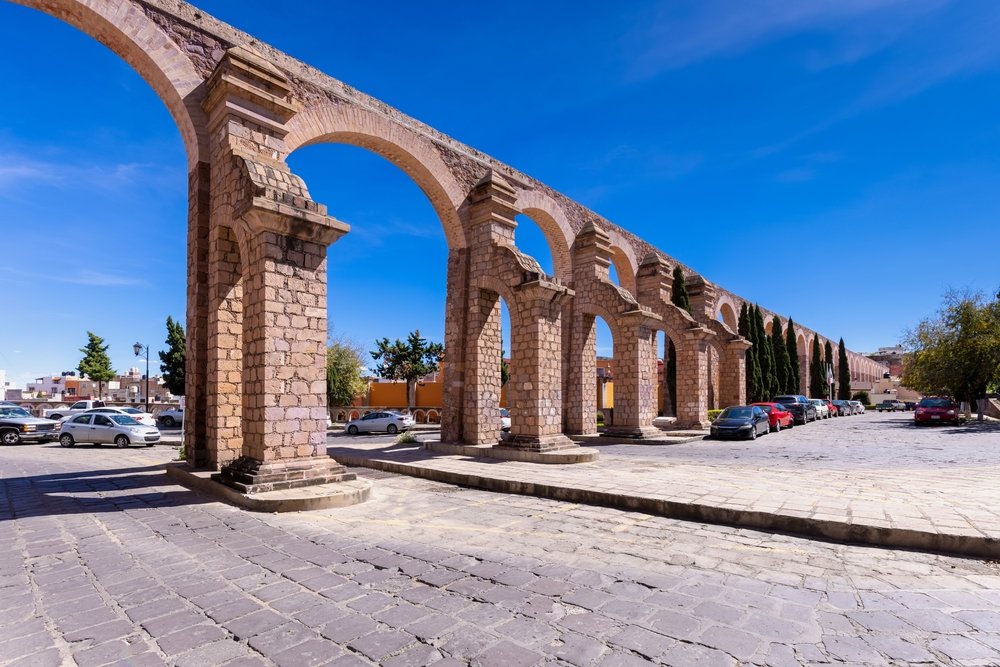

Another iconic tourist sites of Zacatecas is the Vice Royal Aqueduct, impressive with its pink quarry structure dating from the late eighteenth century. However, the construction was extended a century later.
It supplied water to people until the end of the 1920s.
The surviving section of the aqueduct is one of the city’s symbols and carried water to the place where the monument of General Jesús González Ortega is located, a prominent ally of Juárez and governor of Zacatecas (1858-1858).
The elevated canal started at the El Cubo mine, also called the Aqueduct of El Cubo.
The beautiful arches of the canal, some reinforced with flying buttresses, are located where the San Pedro Bullring used to be, currently occupied by a beautiful high-end hotel called Quinta Real.
20. Juchipila, Zacatecas
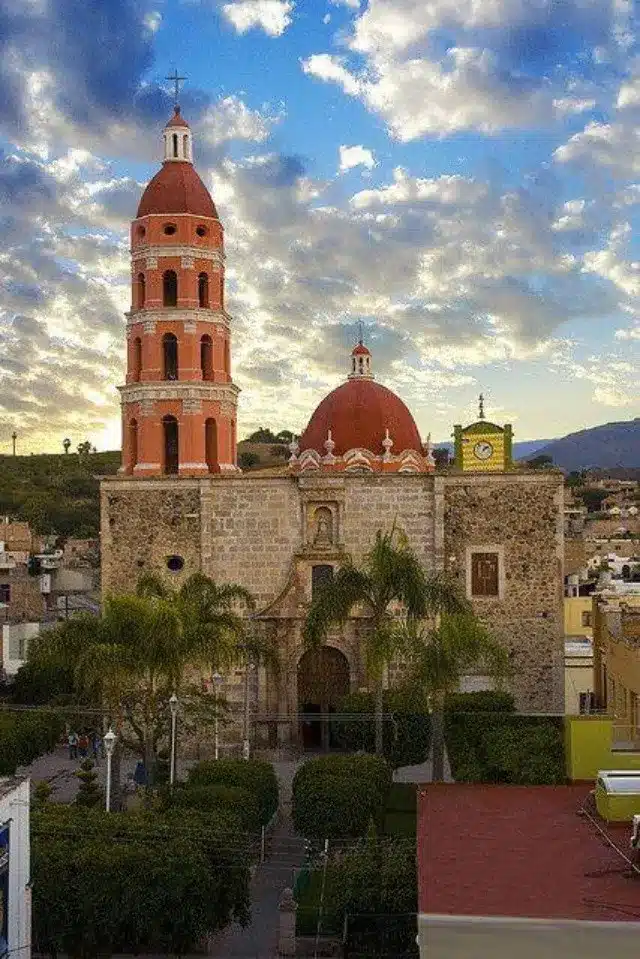
Nestled in the Juchipila Canyon, between the Morones and Nochistlán mountain ranges, south of Zacatecas, lies this picturesque town and municipality whose Nahua name means “place of beautiful flowers.”
The town’s main monuments are the parish church built in the 18th century and the birthplace of the hero, Antonio Rosales Flores, a Juchipilense who distinguished himself during the Reform War and the Second French Intervention, killed in combat in 1865.
The mansion where he was born is next to the temple.
The Cerro de las Ventanas is an archaeological site in the municipality of Juchipila, which owes its name to some caverns with observatories that look like gigantic windows.
The site has a structure called Casa del Acantilado (House of the Cliff), which is believed to have been a lookout point.
Other ruins are a pyramid of 5.6 meters high with a base of 975 m2 and a ball game court platform.
Tips for visiting Zacatecas
- The city of Zacatecas is located at 2460 meters above sea level, so cold nights are expected
- The city offers a wide range of 1 and 5-star hotels, luxury restaurants, and inexpensive places such as La Cantera Musical Restaurant
- Rainfall is low (431 mm per year), mainly between June and September
Zacatecas nightlife
- The night tour of the city of Zacatecas in the cable car with the illuminated historic center is impressive
- A tradition is the callejoneadas, a tour of the streets and alleys of the historic center starting at the Plaza de Armas, with surprises along the way such as mariachis
- The theatrical company Histriónica offers amusing evenings about the legends of Zacatecas, narrated by a character dressed as a devil
- La Mina Club, in the Eden mine, is one of the most original bars in Mexico
Magical Towns of Zacatecas
The state of Zacatecas has 6 Magical Towns: Jerez de García Salinas, Nochistlán, Pinos, Sombrerete, Teúl de González Ortega and Guadalupe.
These towns bring together a beautiful architectural heritage, natural spaces for adventure sports and nature observation, archeological sites, handicrafts, gastronomic traditions, and compelling testimonies of the splendor of the gold and silver era in the region.
Zacatecas City, Mexico: Conclusion
A journey through Zacatecas, Mexico unveils a tapestry of culture, history, and natural beauty that captivates the soul.
From its cobblestone streets steeped in colonial charm to its towering cathedrals and vibrant markets, Zacatecas offers a rich immersion into Mexico’s past and present.
Whether wandering through its UNESCO World Heritage sites, sampling traditional cuisine, or admiring the breathtaking landscapes, every moment in Zacatecas is an opportunity to embrace the essence of Mexico.
So, pack your bags and embark on an escapade to Zacatecas, where every corner reveals a new story waiting to be discovered.

